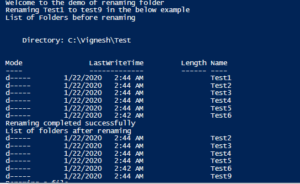



$csv="c:\path\to\csv\rename_files. The following PowerShell script will manage the process of changing file names: $folder="c:\path\to\folder" #target folder containing files Populate the CSV as follows: Path,FileNameĬ:\path\to\filename1.JPG,newfilename1.JPGĬ:\path\to\filename2.JPG,newfilename2.JPG Column 1 = Current file name, including path.Using Microsoft Excel or similar, create a CSV files with two columns: To rename multiple files in PowerShell, you can use the Get-ChildItem cmdlet to get a list of the files you want to rename, and then pipe the list to the Rename-Item cmdlet. The following process will allow you change file names en masse based on a CSV file: Step 1: Create a CSV Rather than a meaningless string, I wanted file names to include an identification number as well as some experimental parameters so that I could match the photo to the plant later on. Unfortunately the standard “IMG_xxxx.JPG” naming convention had been used. JPG images files that I needed to match up to individual plants. Rename-Item is a good tool to rename single or multiple files, extensions, folders, registry, etc. txt file extension, then pipes them to Rename-Item. Use this simple PowerShell script to change hundreds or thousands of file names automatically, based on a CSV.Īs part of a scientific experiment, I had a large number of. The Get-ChildItem cmdlet is used in this example to get all the files in the current folder that have a.


 0 kommentar(er)
0 kommentar(er)
